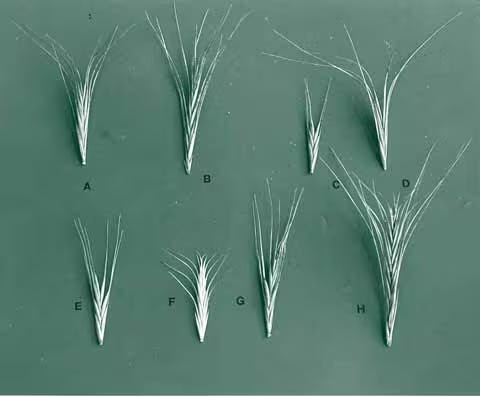What You Need To Know About Foxtail: A Dangerous Grass To Dogs
No one is more excited about getting back into nature than our four-legged companions, who are ready and waiting to romp around and sniff everything in sight.
As we move deeper into spring, and the sometimes unpredictable weather starts allowing for more pleasant days, the itch to adventure into the great outdoors begins to grow. No one is more excited about getting back into nature than our four-legged companions, who are ready and waiting to romp around and sniff everything in sight. But while most people know to be wary of things such as coyotes or ticks when adventuring with their pups, one extreme danger is much less common to be aware of. While you might think your dog sniffing through the shrubbery is harmless, there is one particular type of grass in Massachusetts that could potentially prove deadly to your pooch- foxtail.
What Are Foxtail Plants, And Why Are They Dangerous?
A foxtail plant is a weed-type grass that consists of several different varieties and grows throughout the US. The plants get their name from their appearance being similar to that of a fox's bushy tail. Foxtails begin growing in spring and are in full bloom by summer.
The part of the foxtail plant that you need to be most aware of, are the seeds. foxtail seeds are arranged at the tip of the plant, in spikey clusters with backward-facing barbs, called awns. An image of the awns on a foxtail plant can be seen in the image below. These barbs will cling to passing animals, allowing the plants to disperse their seeds to new areas. However, the barbs of this plant are also used for another thing, one that can be devastating for dogs.
Why Are Foxtails Dangerous For Dogs?
The backward-facing barbs found on the seeds of foxtail plants have evolved to allow for the one-way burrowing of the seed into the Earth to facilitate growth. But, that same evolutionary advantage also causes these seeds to burrow into your dog.
If that sounds dramatic, it's because it is! Once a foxtail seed attaches to any part of your beloved pup's body, it can begin the burrowing process. The most common areas this happens are:
Eyes
Eyelids
Ears
Nostrils
Mouth
Space between the toes (in the paw pads)
However, in some cases, the foxtails can even burrow directly through the skin, finding their way into the spine or chest and belly cavities. Once the seed is inside, it will continue to burrow and also bring dirt and bacteria with it. This can be extremely detrimental if internal organs are affected.
Since these seeds do not break down once inside the body, the only way to fix the problem is to remove them. This may require surgery depending on how deep the seeds have traveled.
Symptoms To Tell If Your Dog Has Foxtail Seeds
Because foxtails can be abundant in nature and easy to overlook, it is crucial to know what symptoms your dog would show if they contracted a foxtail seed.
Immediate Signs To Watch Out For:
Head shaking
Limping
Pawing at the face
Snorting
Sneezing
Bloody Nose
Excessive licking of an area on the body
Other Signs That Can Show Up One To Several Days Later:
Lumps
Bumps
Draining Tracts
Area of redness or tenderness
Inflammation
Lethargy
Depression
Decreased Appetite
If you suspect your dog has an embedded foxtail seed, you should bring them to your veterinarian as soon as possible.
How To Remove Foxtails From Your Dog
As mentioned above, it is crucial that you bring your dog to the vet if you believe a foxtail seed has burrowed into your dog. But, if you find the seeds before they have fully burrowed you should remove them yourself as the earliest removal is important.
If you live in an area where you know foxtail grows, you should ALWAYS check your dog thoroughly after being outside. If you do find a foxtail seed on the surface of your dog's coat or skin, you should attempt to remove it with tweezers the same way you might remove a tick. But, if you are not comfortable with doing so, or you suspect the seed has already begun to penetrate or has entered an opening on your dog such as the nose, bring them immediately to the vet.





